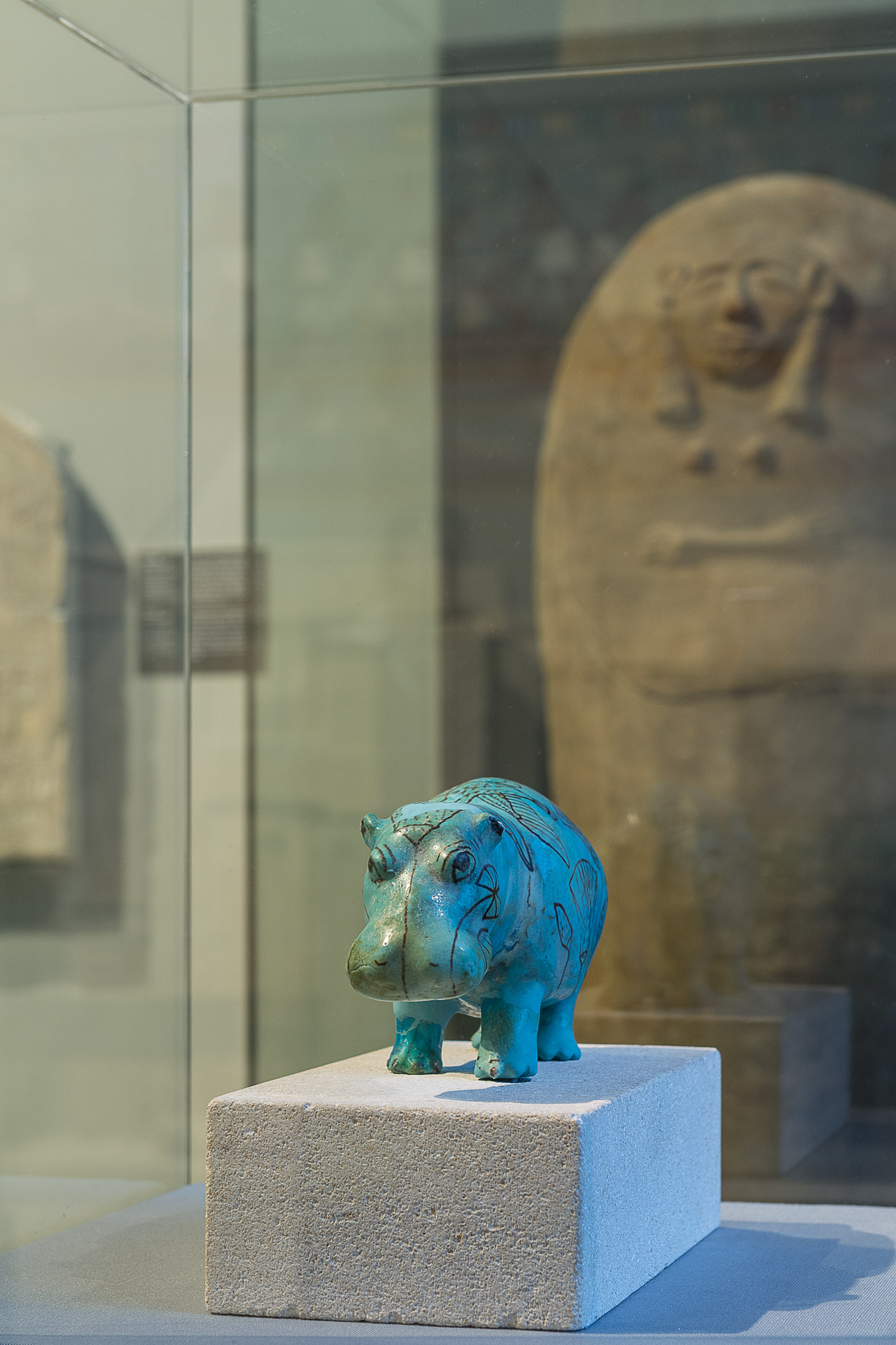The blue faience hippopotamus was a popular statuette in Ancient Egyptian art. Some time ago in DailyArt we presented just such a hippo from the Metropolitan Museum of Art. Hippos were frequently the subject of ancient Egyptian art. Ancient Egyptians considered it to have positive traits associated with fertility and rebirth. Also, little hippopotamus statuettes were found among the objects buried in tombs. Varying in size from 9 to 23 centimeters in length, they are now scattered around the world.
The ancient Egyptians believed that hippos evoke chaotic forces because of the danger they pose to humans as wild animals in this world. For this reason, they often snapped off the legs of hippopotamus statuettes before placing them in tombs, so the hippos wouldn’t be able to eat the soul of the deceased.
Kunsthistorisches’ hippo was recently restored – one of his legs was removed and repaired. The lotus flowers and a flying duck on his back indicate the marshy habitat of the animal.
If you want to know more about these hippos - read our article on DailyArtDaily.com
See you tomorrow!
We need your help - we need $20,000 to create the new version of DailyArt for Android devices. Find out more here. Thank you!
- Zuzanna


 Unknown Artist
Unknown Artist